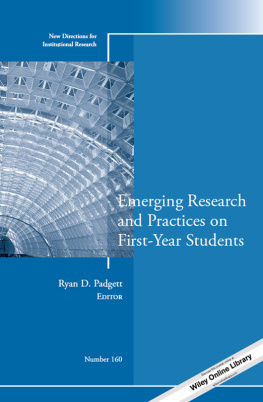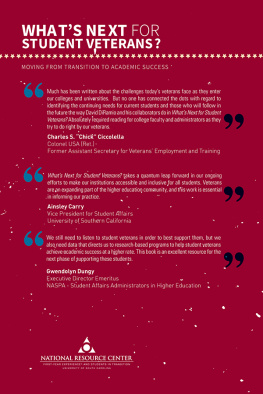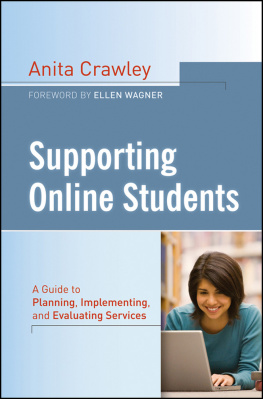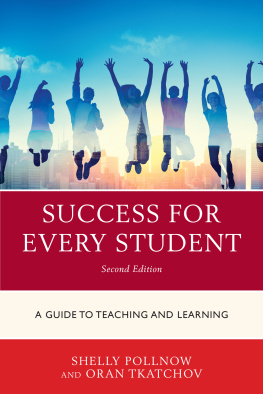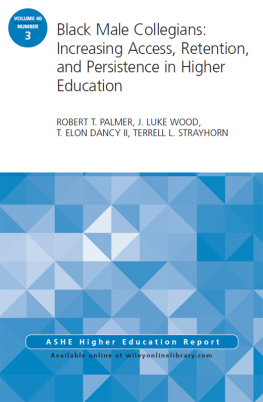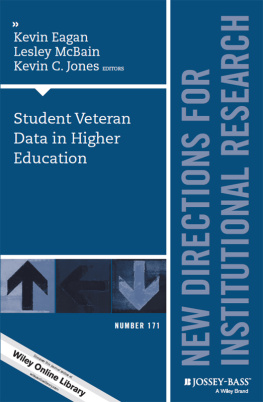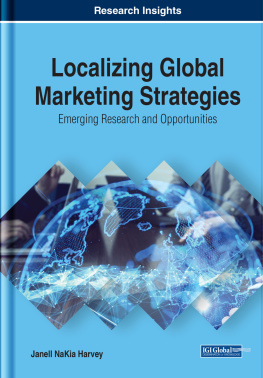
Emerging Research and Practices on First-Year Students
Ryan D. Padgett (ed.)
New Directions for Institutional Research, no. 160
John F. Ryan, Editor-in-Chief
Gloria Crisp, Associate Editor
Copyright 2014 Wiley Periodicals, Inc., A Wiley Company
All rights reserved. No part of this publication may be reproduced in any form or by any means, except as permitted under section 107 or 108 of the 1976 United States Copyright Act, without either the prior written permission of the publisher or authorization through the Copyright Clearance Center, 222 Rosewood Drive, Danvers, MA 01923; (978) 750-8400; fax (978) 646-8600. The code and copyright notice appearing at the bottom of the first page of an article in this journal indicate the copyright holder's consent that copies may be made for personal or internal use, or for personal or internal use of specific clients, on the condition that the copier pay for copying beyond that permitted by law. This consent does not extend to other kinds of copying, such as copying for general distribution, for advertising or promotional purposes, for creating collective works, or for resale. Such permission requests and other permission inquiries should be addressed to the Permissions Department, c/o John Wiley & Sons, Inc., 111 River St., Hoboken, NJ 07030; (201) 748-8789, fax (201) 748-6326, http://www.wiley.com/go/permissions.
New Directions for Institutional Research (ISSN 0271-0579, electronic ISSN 1536-075X) is part of The Jossey-Bass Higher and Adult Education Series and is published quarterly by Wiley Subscription Services, Inc., A Wiley Company, at Jossey-Bass, One Montgomery Street, Suite 1200, San Francisco, California 94104-4594 (publication number USPS 098-830). POSTMASTER: Send address changes to New Directions for Institutional Research, Jossey-Bass, One Montgomery Street, Suite 1200, San Francisco, California 94104-4594.
Individual Subscription Rate (in USD): $89 per year US/Can/Mex, $113 rest of world; institutional subscription rate: $317 US, $357 Can/Mex, $391 rest of world. Single copy rate: $29. Electronic only--all regions: $89 individual, $317 institutional; Print & Electronic--US: $98 individual, $365 institutional; Print & Electronic--Canada/Mexico: $98 individual, $405 institutional; Print & Electronic--Rest of World: $122 individual, $439 institutional.
Editorial Correspondence should be sent to John F. Ryan at .
New Directions for Institutional Research is indexed in Academic Search (EBSCO), Academic Search Elite (EBSCO), Academic Search Premier (EBSCO), CIJE: Current Index to Journals in Education (ERIC), Contents Pages in Education (T&F), EBSCO Professional Development Collection (EBSCO), Educational Research Abstracts Online (T&F), ERIC Database (Education Resources Information Center), Higher Education Abstracts (Claremont Graduate University), Multicultural Education Abstracts (T&F), Sociology of Education Abstracts (T&F).
Microfilm copies of issues and chapters are available in 16mm and 35mm, as well as microfi che in 105mm, through University Microfilms, Inc., 300 North Zeeb Road, Ann Arbor, Michigan 48106-1346.
www.josseybass.com
The Association for Institutional Research (AIR) is the world's largest professional association for institutional researchers. The organization provides educational resources, best practices, and professional development opportunities for more than 4,000 members. Its primary purpose is to support members in the process of collecting, analyzing, and converting data into information that supports decision making in higher education.
Editor's Notes
Research on the first-year experience is as ubiquitous as the components of the first-year experience. The myriad of research and assessmentboth national and localhave produced a sort of internal debate within higher education as to the consistency of the findings and the success of their application to practice. Stated differently, initiatives that produce results on one campus may not on another. This inconsistency has ignited researchers to be more conscientious about assessing first-year experiences, as evident from the increase in quality data, applied complex statistical models, and assessment strategies within the literature.
Yet despite higher education's best efforts, pinpointing the exact means through which students succeed or persist on a four-year graduation track is as elusive as ever. With a greater diversity in the demographics of students, decreasing public appropriations, and calls for more stringent levels of accountability, research and assessment on the first year continues to be prevalent and relevant. In the face of these challenges, institutions of higher education have increasingly embraced their obligation for assisting students with the transition to the college learning environment (Swing, 2004, p. ix). To this end, this volume continues the examination of the first year and the factors that impact student success and persistence.
Together, the chapters within this volume provide a template for researchers on the statistical methods that need to be considered when conducting assessment on first-year experiences. Chapter 1 provides a comprehensive blueprint outlining the foundational understandings of first-year assessment. Grounded in the conceptual framework of sound assessment, Chapter 1 provides novice and intermediate researchers with a firm understanding of the decisions to consider prior to assessment. Chapters 24 utilize large, national surveys to examine the impact of the first year on a variety of learning and retention outcomes. Chapter 2 highlights three first-year programs (e.g., high-impact practices) that statistically increase student learning. Chapter 3 expands upon the programs of the first year by estimating the effects of vetted good practices across two psychosocial measures. In addition, Chapter 3 provides a sound argument for the need to disaggregate data across student characteristics to more accurately assess the impact of these practices across groups. Chapter 4 provides a comprehensive predictive model, illustrating the importance of the use of control and covariate measures to estimate student persistence. Finally, Chapter 5 expands our understanding of the first-year experience by documenting the challenges of applying these experiences within two-year institutions.
Before practitioners can utilize data-driven processes, sound empirical evidence must be collected. The question as to where to begin? is thoroughly discussed in Chapter 1. Jennifer R. Keup and Cindy A. Kilgo provide one of the more compelling and comprehensive examinations of assessment techniques. Supported by recent research, Keup and Kilgo provide a road map for emerging researchers on first-year assessment as well as considerations to help support these decisions.
Over the last decade, research on high-impact practices has become as prevalent as research on first-year experiences. Yet despite the overwhelmingly positive evidence, few have isolated the effects of high-impact practices within the first year. Using data from the National Survey of Student Engagement, Malika Tukibayeva and Robert M. Gonyea estimate the impact of first-year participation in service learning, learning communities, and research with faculty on student learning. Critical to this evaluation is the snapshot of participation broken down by student and institutional characteristics.
The assessment movement within higher education has relied heavily on longitudinal studies to accurately estimate student learning and development. Using data from the Wabash National Study of Liberal Arts Education, Kathleen M. Goodman presents a strong argument for the necessity to disaggregate data by student characteristics when measuring the effects of a program/practice on any outcome. If the ultimate goal for a researcher is to accurately measure the impact of participation and engagement, Goodman suggests that disaggregating data or accounting for conditional effects must become routine.
Next page
